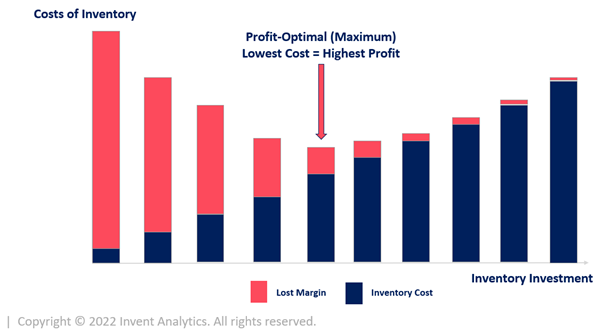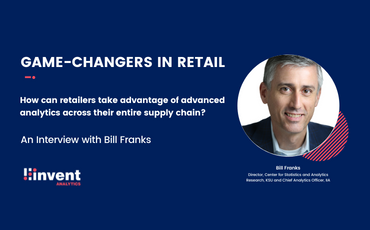
How to Find Optimal Inventory Balance to Reduce Inventory and Lost Sales
In the new world of retail, success depends heavily on retailers’ ability to deliver value, and inventory optimization excellence is at the heart of that ability. Having the right products available on various channels, fulfilling the omni-channel customers’ demand at the right time and by their chosen fulfillment method come with a huge opportunity to succeed in 2022 and beyond.
However, despite the general desire to achieve retail excellence, tackling inventory reduction, lost sales, waste, inventory holding, and fulfillment costs remains an ongoing challenge for retailers. And yet, even some of the large and complex retailers are still prone to use primitive tools in their operations.
While there isn't just one magic formula for inventory optimization, the insights in this article can help retailers increase their inventory planning capabilities significantly, reduce inventory, lost sales and achieve retail excellence.
Why Should Retailers Avoid Having Too Much Inventory?
Today, mastery of inventory reduction is one area that retailers simply can’t overlook. The reality is that inventory is a major supply chain cost driver with an incredible financial value.
And there is a constant trade-off: order too much and deal with accumulated inventory or waste; order too little, lose sales, and damage customer loyalty. The costs associated with overstocking and understocking can take a huge bite out of the operational budget, and eventually company profit.
What retailers need is to have the right profit-optimizing capabilities to strike the right balance and make the right inventory decisions considering the optimal inventory point.

How Can Retailers Reduce Inventory and Lost Sales?
Finding the optimal inventory balance is no longer simply an enabler; it is a key business process that will determine who will (and who won’t) meet customer demand, improve profits, and build a competitive advantage.
Retailers recognize that there are two sides to finding the optimal inventory balance: in-stock and inventory turns. There is a higher awareness around the inventory most of the time, mainly because it’s a tangible asset. And for the lost sales, the commonly used approach is rule-based.
Luckily, there is a better way.
Profit-Optimization Model for Inventory Planning
Future-fit retailers revolutionize their inventory planning with the financial- profit-optimization model and answer the fundamental question of how much inventory they should have at each point at a given time.
It starts with successful demand forecasting and followed by replenishment and allocation, store transfer and markdown optimization.
By determining the pain points using the right supply chain planning tools and applying the right solutions, retailers successfully optimize their inventory planning, and as a result, they reduce inventory.
Financial-profit-based optimization also opens new doors to increased efficiency and profits. It allows retailers to have a betting strategy that can increase their chances of winning in the game of demand uncertainty.
Minimizing Lost Sales and Inventory Holding Costs
To stay on top of evolving consumers and reduce inventory, retailers need to sharpen their understanding of their consumers’ preferences and manage Store-SKU inventory decisions accurately. By mapping the inventory needs with profit-optimized replenishment, retailers can make the right inventory allocation and supply distribution decisions.
This holistic approach comes with several benefits. By making profit-optimized allocation decisions, retailers can ensure that the inventory won’t get stuck at a non-selling location and won’t be dealing with excess inventory. On top of that, they can maximize profit while minimizing lost sales and inventory holding costs.
However, in this stochastic world, one should keep in mind that the profit-optimized replenishment and allocation decisions are as hard as it gets. To cope with the uncertainties there are many things to deep dive in:
- Measuring the prediction models and accuracies,
- Measuring the demand volatility across channels,
- Monitoring the inventory management operational accuracy,
- Monitoring the allocation decisions to better understand the priorities,
Predicting the sales demand hasn’t been easy and does not seem to be any easier in the future, just the opposite. The prediction models have to be solid to cover all the elements in driving the demand, but surely that is not always the case. So, the retailers should always be aware of the dimensions that are straying the wheel from being accurate at its best.

Are you interested in achieving inventory optimization excellence? If so, schedule a meeting with one of our retail experts today and find out how we can help you to profit-optimize your inventory planning and stay ahead of the competition in the omni-channel era.





